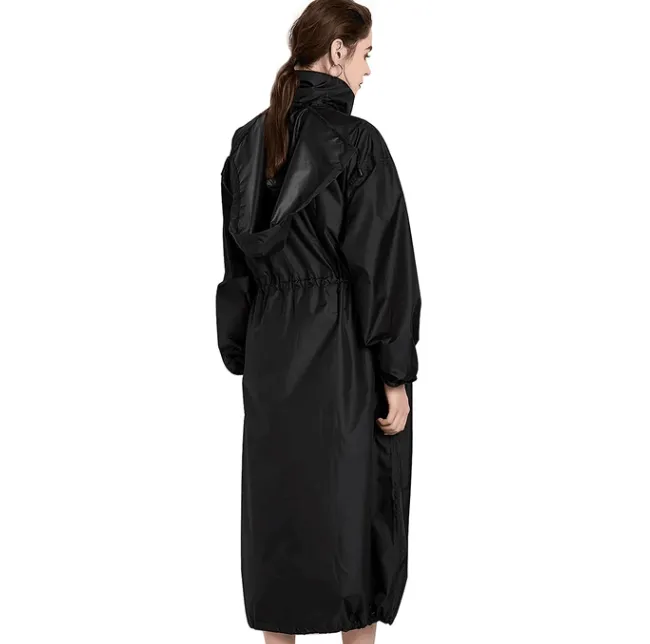 rainwears@163.com may@may-rain.com
rainwears@163.com may@may-rain.com Hétfőtől péntekig: 8.00-19.00
Hétfőtől péntekig: 8.00-19.00
Polyester vs PVC Raincoats: Choosing the Right Waterproof Gear
When it comes to staying dry in wet weather, the material of your raincoat makes all the difference. Whether you're commuting, hiking, or just running errands, a good raincoat can keep you protected and comfortable. Among the most common materials, polyester raincoat and PVC raincoat options dominate the market. Each has unique benefits and trade-offs. In this guide, we'll break down everything you need to know about polyester rain jacket waterproof options, compare polyester vs PVC raincoat, and help you decide which one fits your lifestyle best.

What Makes a Polyester Raincoat a Smart Choice?
A polyester raincoat is one of the most popular choices today, and for good reason. Polyester is a synthetic fabric known for being lightweight, breathable, and quick-drying. When coated or treated properly, it becomes highly water-resistant and even fully waterproof.
A polyester rain jacket waterproof design typically includes a durable water-repellent (DWR) coating, or sometimes a breathable waterproof membrane like Gore-Tex or a polyurethane (PU) coating. These additions allow rain to roll off the fabric while letting heat and sweat escape from the inside—making them ideal for active use such as hiking, biking, or walking in the city.
Benefits of Polyester Raincoats:
Lightweight and comfortable
Breathable when combined with mesh or membrane linings
Resistant to wrinkles and shrinking
Dries quickly
Easy to pack and store
If you're looking for an all-day jacket that won’t overheat, a polyester rain jacket waterproof style is a great option.
The PVC Polyester Raincoat: Heavier but Tougher
If maximum waterproofing is your priority, then a PVC polyester raincoat might be the right choice. PVC (polyvinyl chloride) is a plastic-based material that is completely waterproof and often used as an outer coating over polyester fabric. This blend—PVC polyester raincoat—combines the flexible durability of polyester with the water-impermeable properties of PVC.
PVC raincoats are widely used in construction, fishing, and heavy-duty outdoor work environments where staying completely dry is crucial, even in heavy downpours.
Benefits of PVC Polyester Raincoats:
100% waterproof
Durable and resistant to tearing
Easy to clean
Affordable
However, they’re usually heavier, less breathable, and may not be as comfortable for long-term wear. Since PVC is non-porous, it traps body heat and moisture, making these jackets better suited for short-term or low-activity use in wet environments.
Polyester vs PVC Raincoat: Which Is Better for You?
The polyester vs PVC raincoat debate comes down to your needs, activity level, and weather conditions.
|
Feature |
Polyester Raincoat |
PVC Raincoat |
|
Waterproof Rating |
High (with coating) |
100% Waterproof |
|
Breathability |
High |
Very Low |
|
Weight |
Lightweight |
Heavier |
|
Durability |
Good for daily use |
Excellent for harsh conditions |
|
Comfort |
Soft and flexible |
Less flexible, can feel stiff |
|
Ideal Use |
Urban, travel, hiking |
Worksites, fishing, short-term wear |
|
Price Range |
Moderate to high |
Generally affordable |
In mixed weather or for active use, go with a polyester rain jacket waterproof style. If you’re in extremely wet, muddy, or industrial environments where breathability isn’t a concern, a PVC polyester raincoat will provide unmatched water protection.
Final Thoughts: Making the Right Choice
Whether you’re comparing pvc vs polyester raincoat for fashion, comfort, or function, it ultimately depends on how and where you’ll use your rain gear. A breathable polyester raincoat is great for everyday use, commuting, and outdoor activities. On the other hand, a PVC polyester raincoat is best for heavy-duty work or torrential downpours where 100% waterproofing is non-negotiable.
Each has its place in your wardrobe, and many people choose to own both types for different situations. Think of polyester as your go-to for versatility and comfort, and PVC as your shield in extreme conditions.
-
Ultimate Protection: Choosing the Right Rain Poncho for Men
HírJul.02,2025
-
The Art of Protection: Exploring Drawing Aprons Through Sketch and Color
HírJul.02,2025
-
Stay Dry in Style: The Best Rain Jackets for Men in 2025
HírJul.02,2025
-
Stay Chic and Dry: The Best Poncho Raincoats for Women
HírJul.02,2025
-
Rain Ready & Stylish: A Complete Guide to Ladies Rain Jackets
HírJul.02,2025































